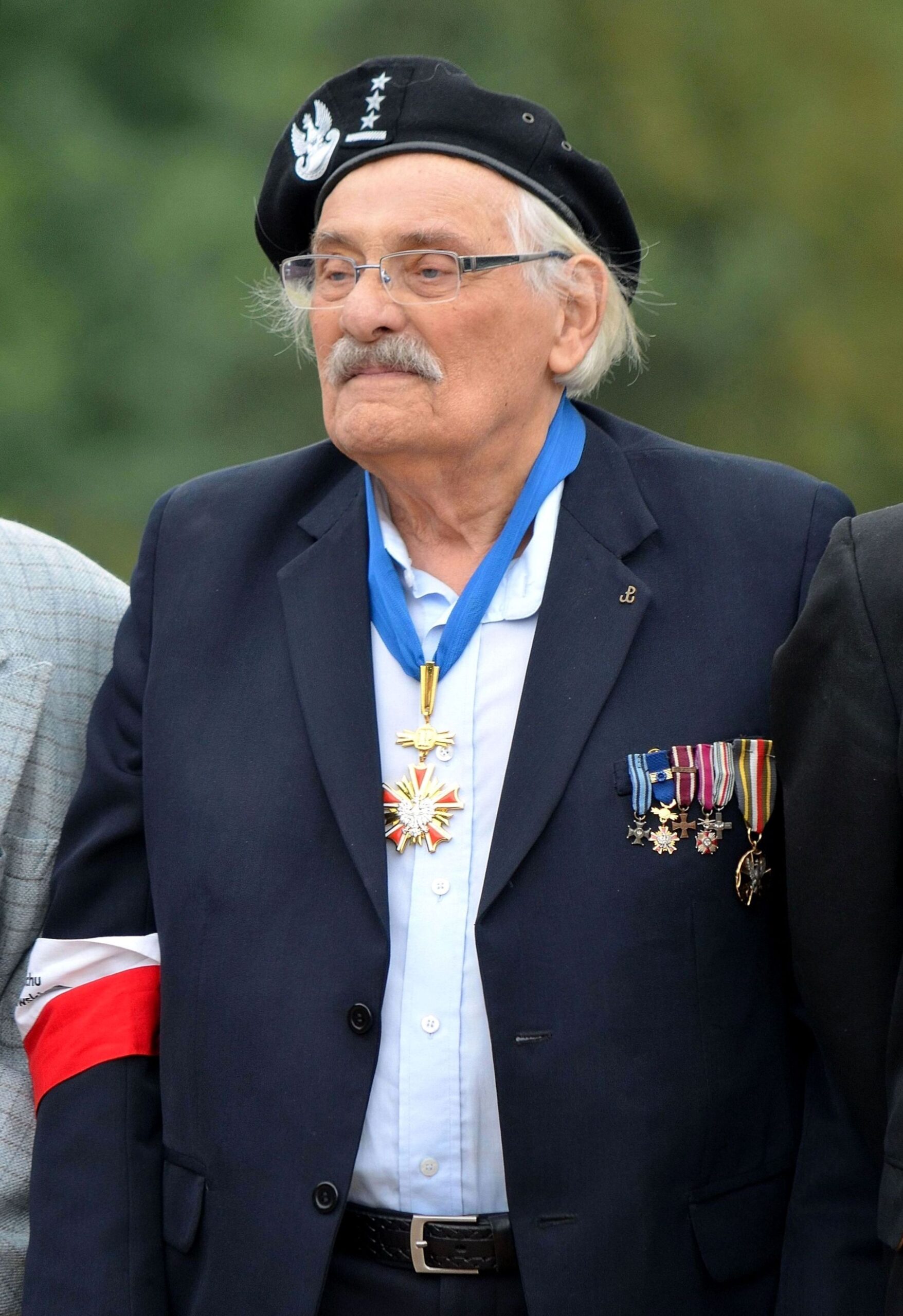Samuel stressed that he always felt Polish, which is why when the war broke out he joined the Polish army as a volunteer. He was fighting against the Red Army when he was wounded. He escaped from the hospital and left with his family for Opatów, near his hometown of Częstochowa. There they ended up in the ghetto, where Samuel sold pictures painted by his father to the local community.
In the fall of 1942, he was sent from the ghetto to a camp. Samuel recalled the arrival at Treblinka as follows:
Suddenly we found ourselves in a forest. The branches reached all the way to the wagon and the mothers in the wagons lifted the children so they could see a pine tree for the first time in their lives. Happy were the children, with what they were seeing and not knowing what would happen next.
In the square, Samuel, on the advice of one of the prisoners, told a guard that he was a bricklayer, and because he was wearing his father’s paint-stained apron, he was taken out, the only one, from the column going to the gas chamber. With No. 937, he worked in a warehouse for items left behind by Jews murdered in the camp. Once while working there, he recognized the clothes of his two sisters.
In the spring of 1943, renovations were carried out on two barracks, which housed the weapons arsenal. This renovation was carried out by Jewish workers, who also did locksmith work and made extra keys for all locks and padlocks. The conspiracy in the camp planned to carry out an uprising. The goal of the uprising was primarily to destroy the camp, then escape.
On August 2, 1943, the revolt began around 4 pm. At that time the camp caught fire. Fuel tanks located in the camp were set on fire, from which more buildings were engulfed in flames. A shootout with Ukrainian guards ensued. Samuel’s wounded comrade asked him to finish his life. As Samuel recalled,
I pulled the trigger. I shot him in the head. After that, me and the others ran toward the exit to the vegetable garden. When we ran to the fence, a terrible sight appeared to our eyes. Plenty of scattered corpses. Among the tank barrages stood, erect like monuments, slain prisoners. The human mass, forming a sort of platform, laid on the barbed wire and barriers. On two sides from the guard towers machine gun bullets rained down on us all the time. I waited a while and, as if on wings, jumped over the barrage over the dead bodies of my colleagues. Suddenly I felt a twitch in my leg and a hit like from a rock. After a short time I felt my shoe fill with blood. It turned out that a bullet had hit me in the leg. Limping, I made it to the railroad track. In the woods, we came across a girl from a nearby village. She looked at us as if we were some kind of monsters not from this earth. Suddenly I started screaming possessively: Hell burned! Hell burned!
Samuel managed to escape. He reached Warsaw, where he met his father in hiding. His appearance helped him in the hideout – he had blond hair and blue eyes. He joined the underground, and when the Warsaw Uprising broke out in 1944 he also took part in it. Immediately after the war, he trained Jewish survivors in self-defense, and also led groups across the green border. In 1950 he left with his wife and mother for Israel, where he died.
